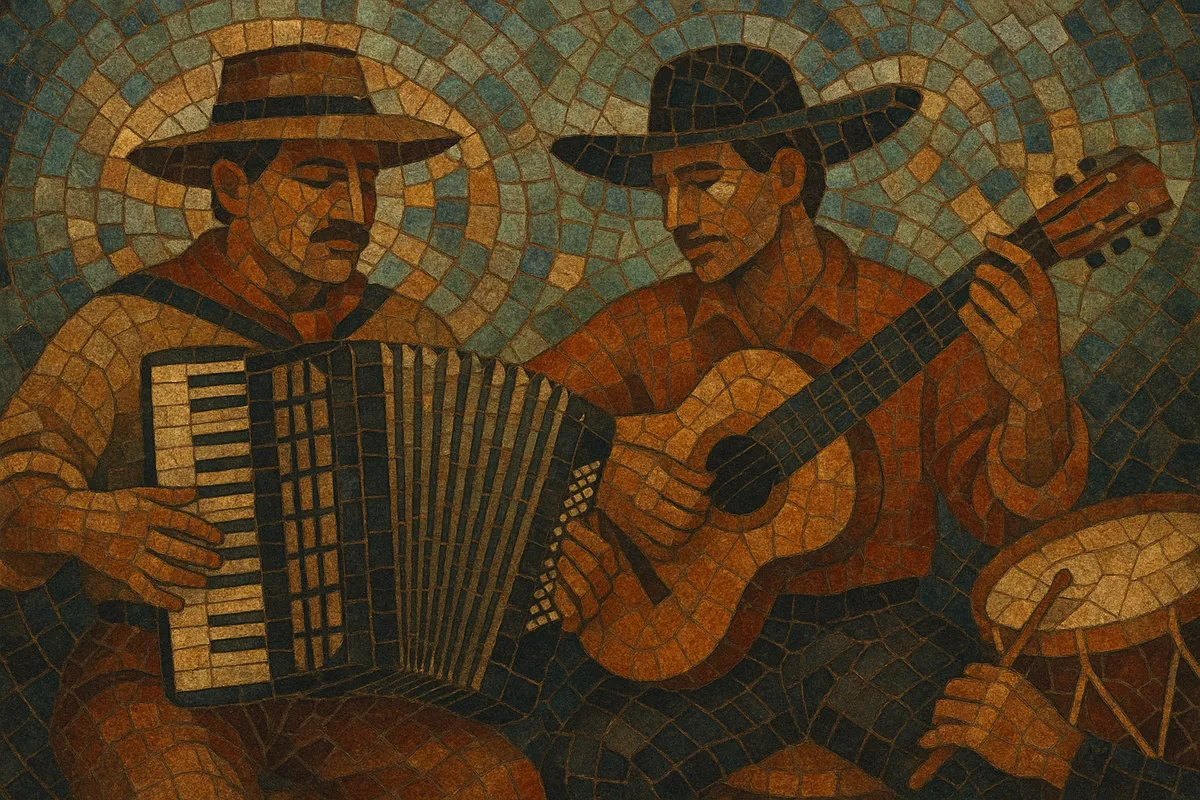Vanera (often spelled vaneira, with its faster variant vanerão) is a lively dance-music rhythm from southern Brazil that forms a core part of the baile repertoire of música gaúcha. It blends the syncopated sway of the 19th‑century habanera with Central European couple dances (polka, schottische) and borderland styles such as chamamé and milonga.
Typically in 2/4 (sometimes 4/4) at a medium-to-fast tempo, vanera emphasizes a buoyant, forward-leaning groove: a steady on‑beat "marcação" (kick/bass) against off‑beat guitar and accordion figures, with frequent anticipations and light syncopation. The accordion (gaita) often leads with hooky riffs, while guitars provide rasgueado/strummed patterns and the drum kit articulates the characteristic "levada da vaneira." Lyrics commonly celebrate rural life, rodeios, love, friendship, and gaúcho traditions, making the style both danceable and warmly communal.
Vanera’s rhythmic DNA traces back to the transatlantic spread of the habanera in the late 19th century. In southern Brazil—especially Rio Grande do Sul—this pulse intermingled with Central European couple-dance forms brought by immigrant communities (polka and schottische) and with borderland idioms like chamamé (from the Argentina/Paraguay region) and the River Plate milonga. The modern, standardized dance‑band version of vanera coalesced in the 1950s amid the rise of CTGs (Centros de Tradições Gaúchas) and baile ensembles playing for social dances.
From the late 1960s onward, professional groups formalized vanera as a distinct groove in the broader field of música gaúcha. Recording infrastructure, radio, and regional festivals helped spread the style beyond local dance halls. Bands refined a portable band setup—accordion, guitars, bass, and drum kit—capable of filling large dancefloors while keeping the music rooted in gaucho tradition.
In the 1990s and 2000s, vanera’s accessible, upbeat swing made it a favorite for baile bands and fueled a wave of regional popularity sometimes called “tchê music.” The groove adapted well to modern production, brighter drum sounds, and pop‑leaning song forms, helping it reach broader Brazilian audiences via touring and television.
More recently, vanera’s propulsive 2/4 feel has seeped into contemporary sertanejo and agronejo, where writers use the rhythm to energize choruses and keep songs dance‑floor ready. While remaining a pillar of música gaúcha, vanera now circulates widely across Brazilian country‑pop circuits, retaining its social-dance core while embracing modern arrangements and studio polish.


